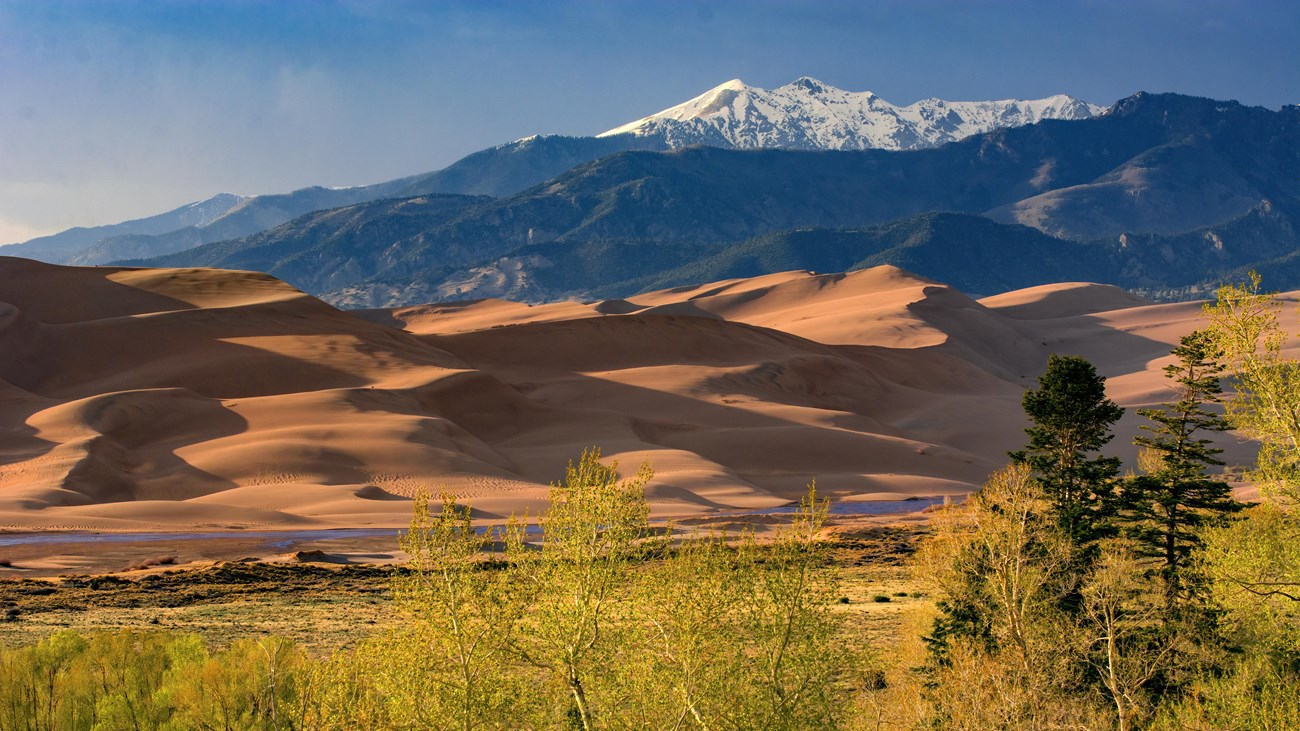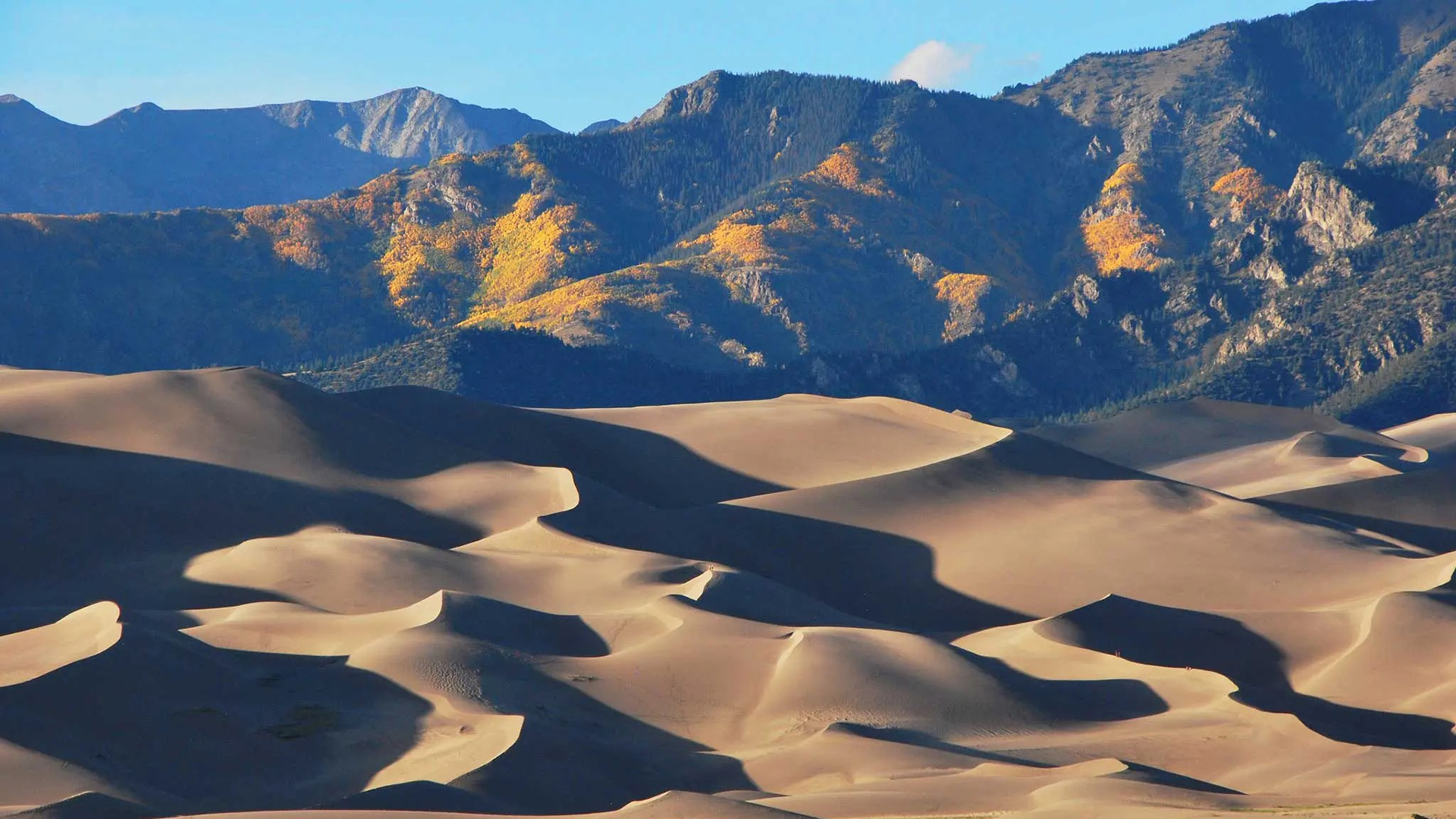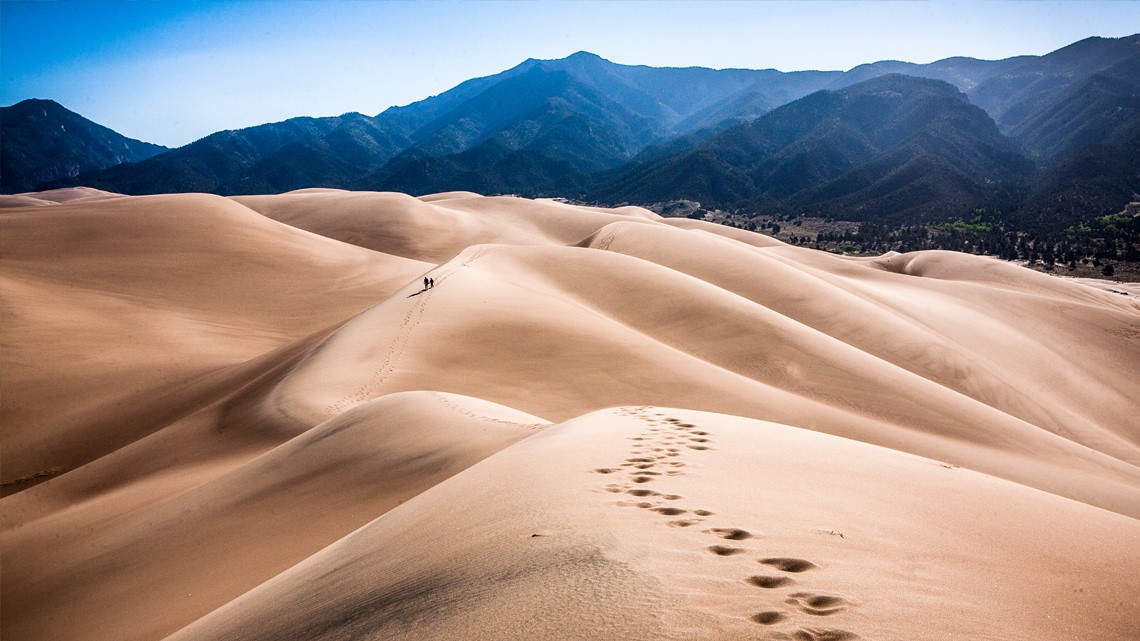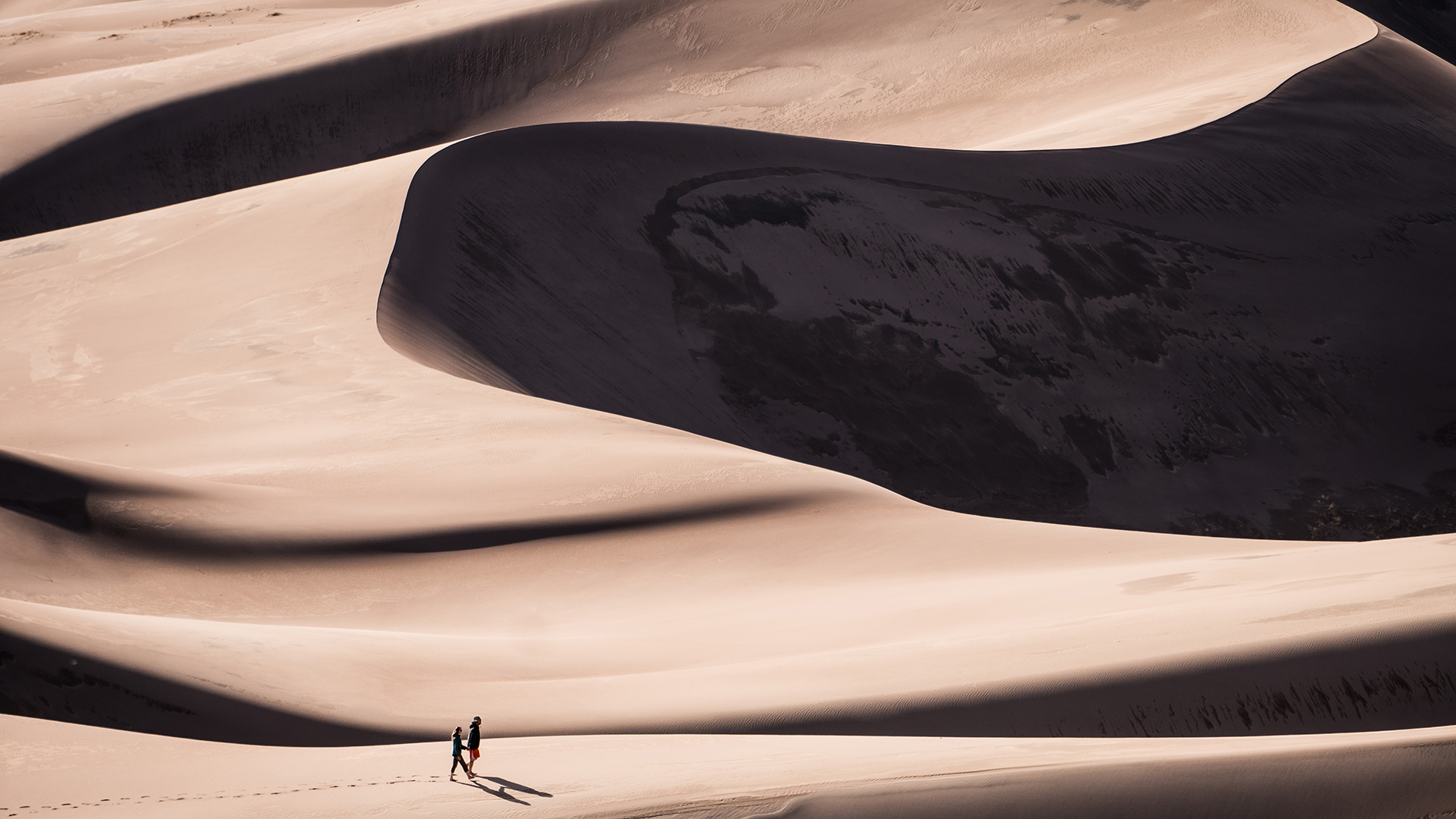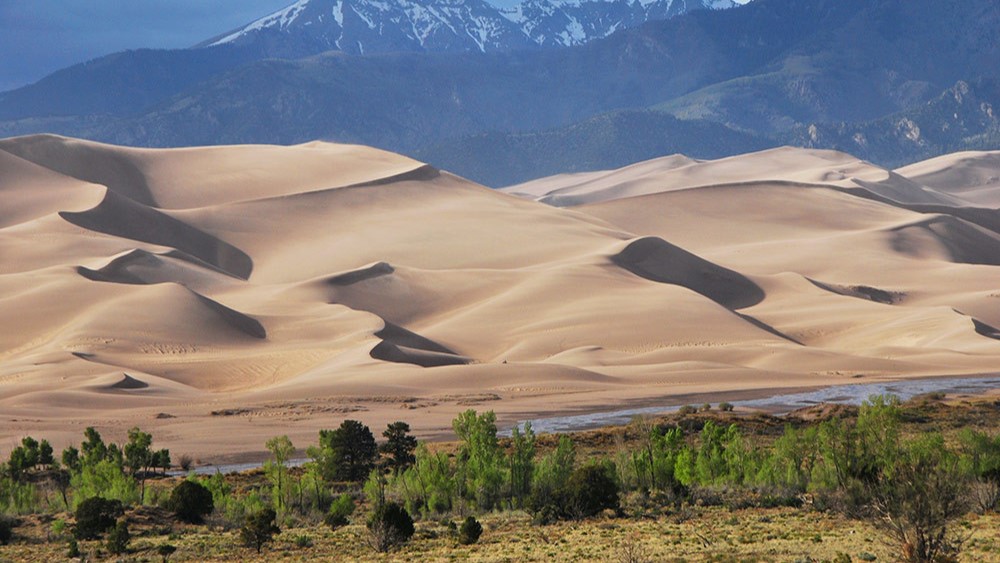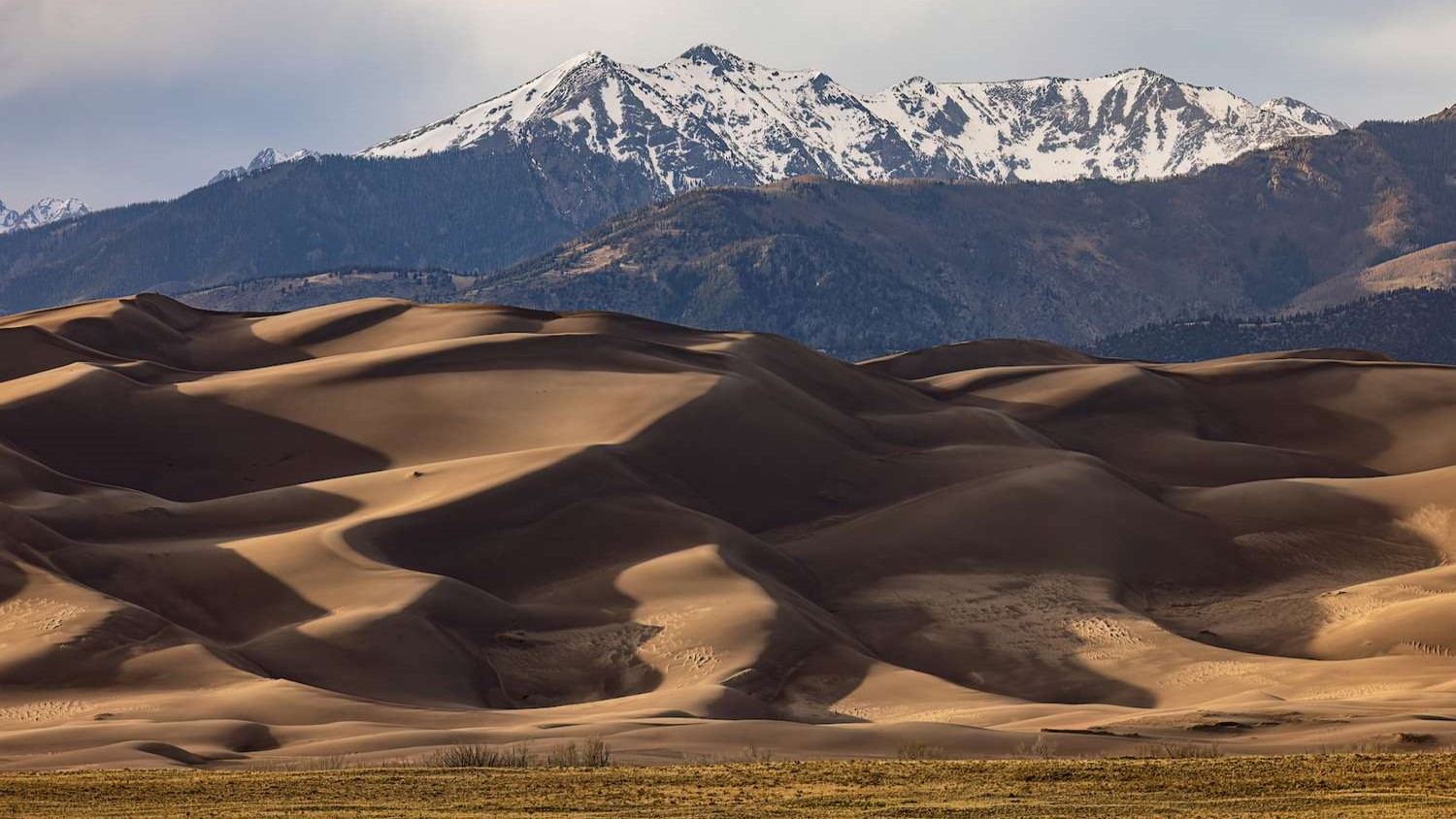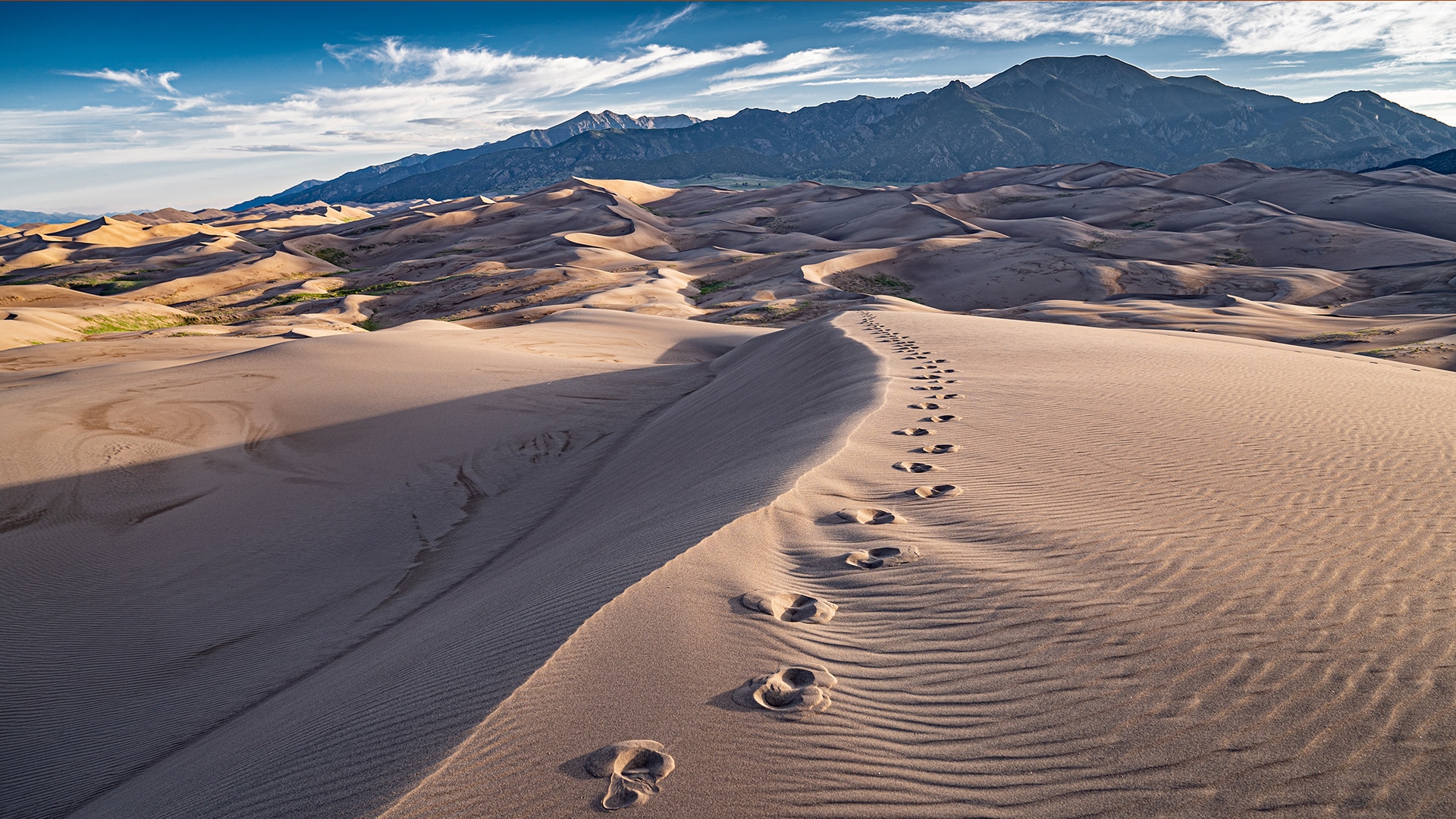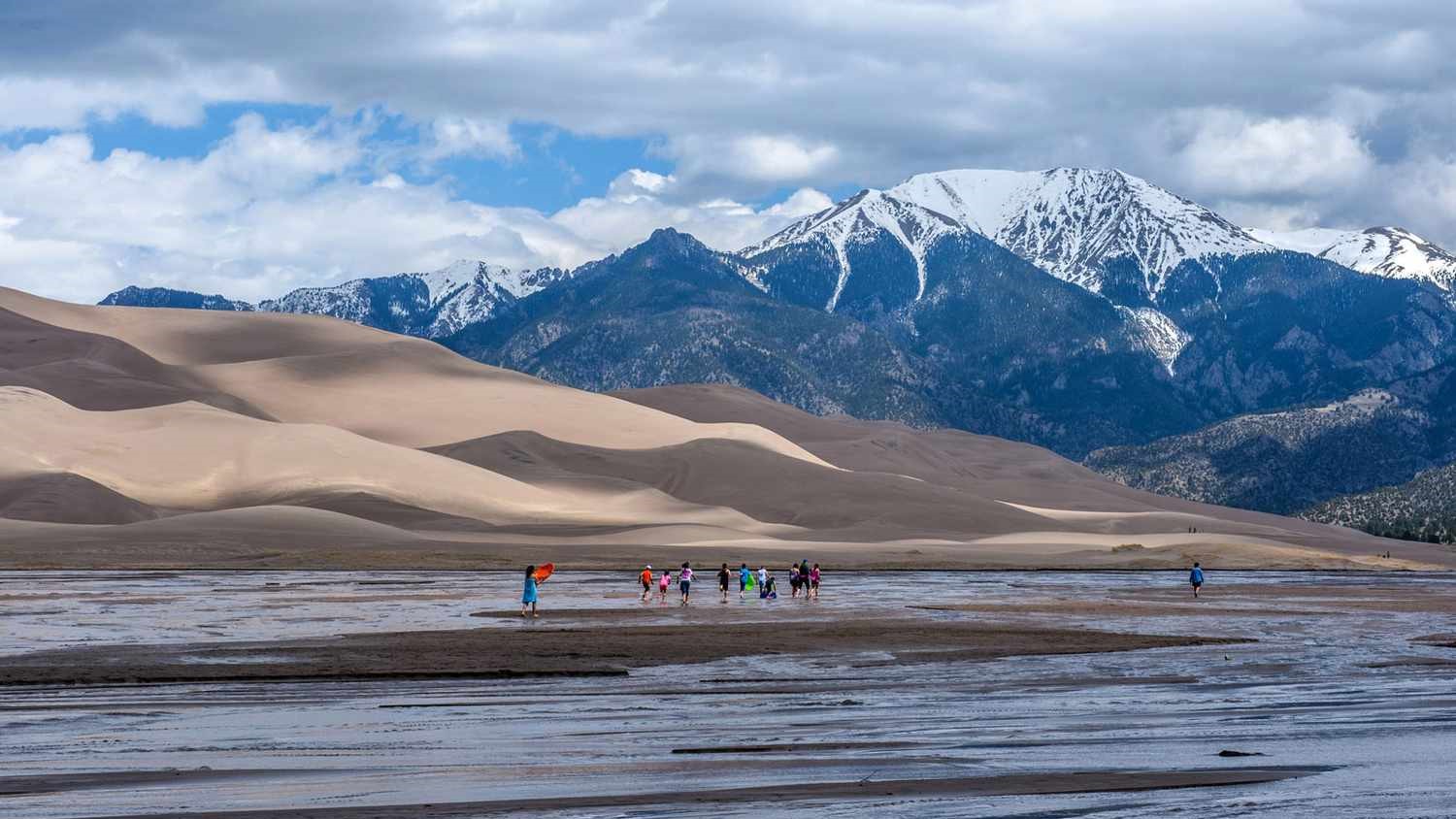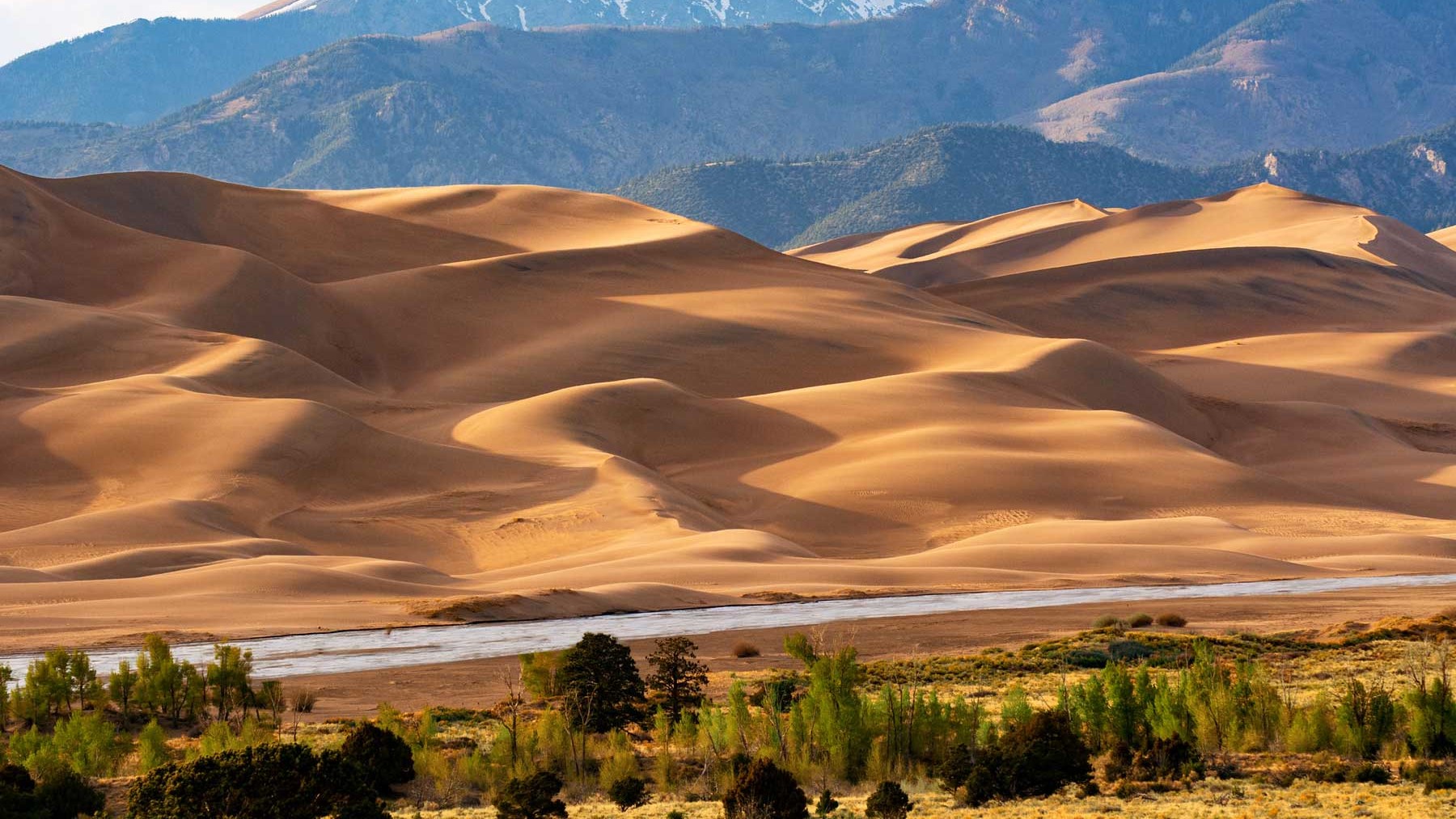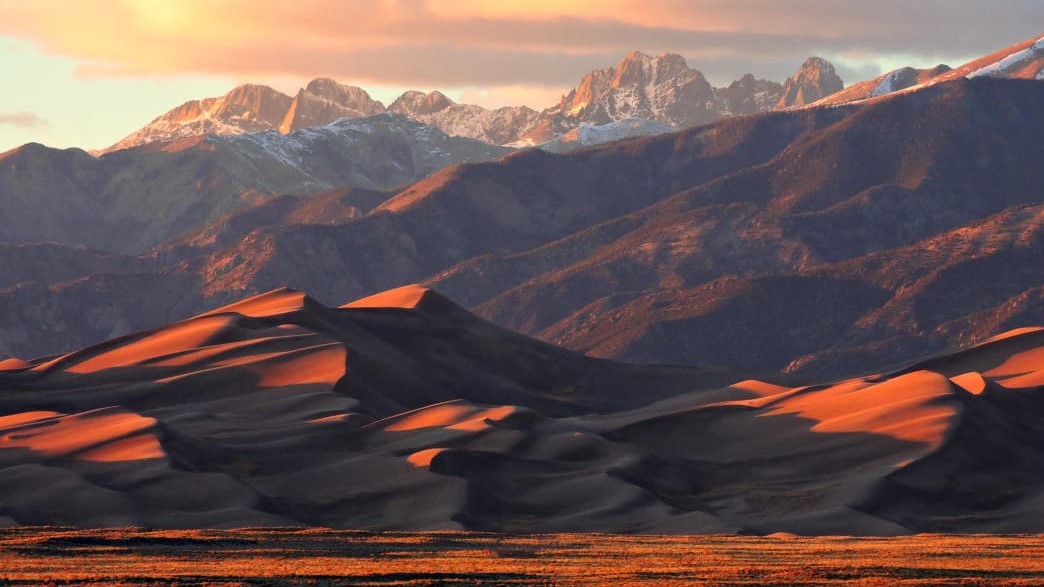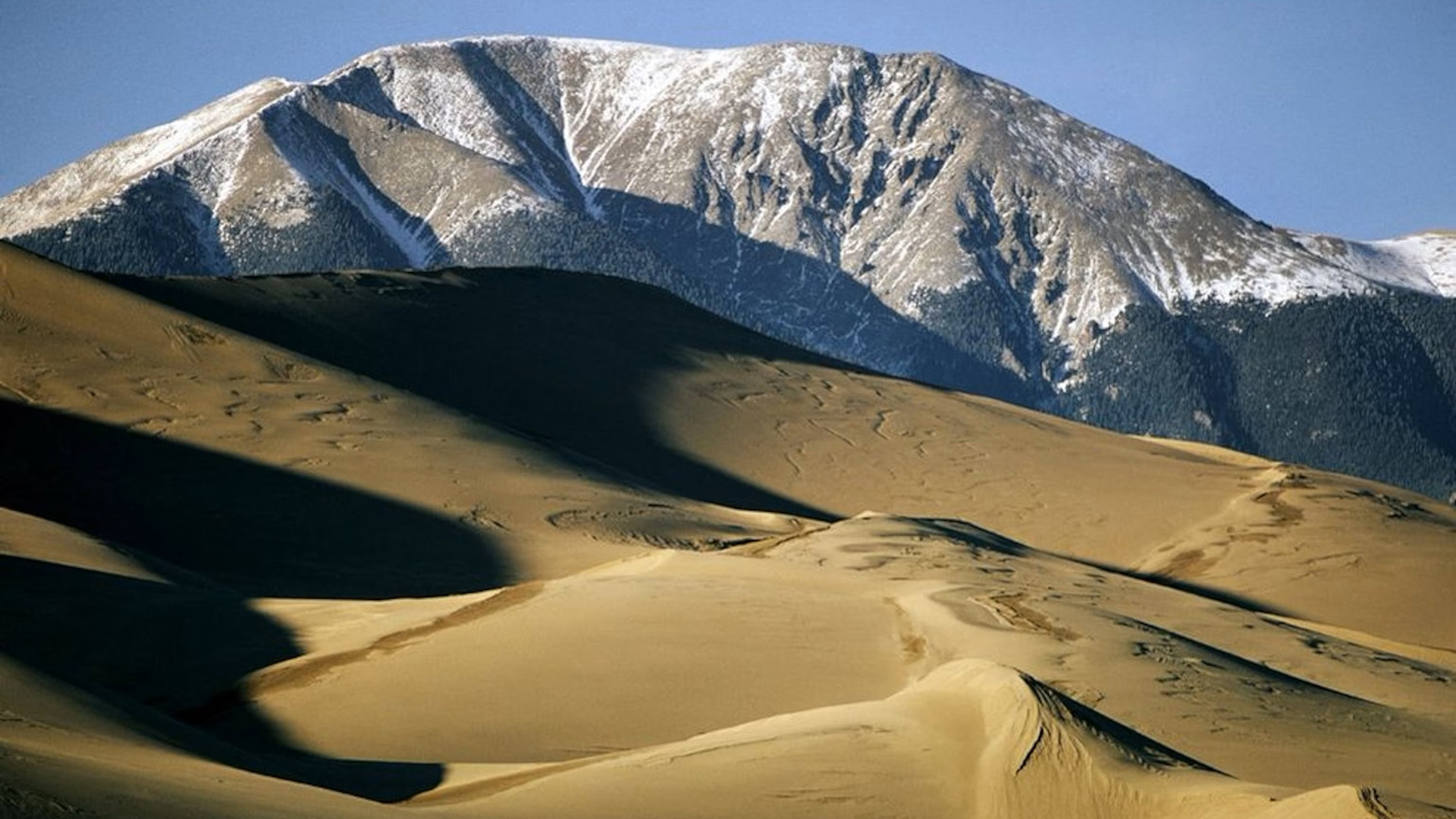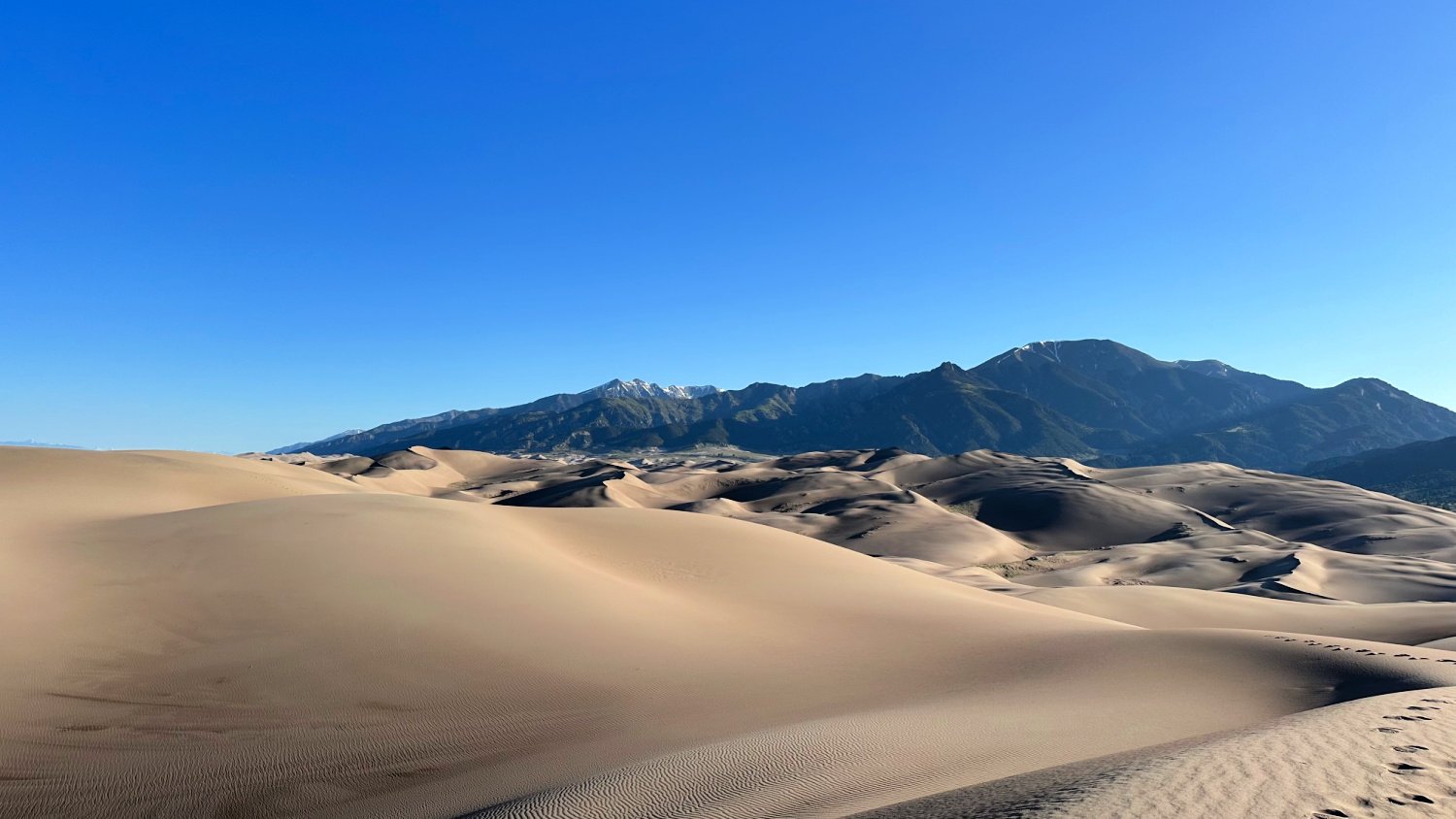Great Sand Dunes National Park and Preserve
Great Sand Dunes National Park and Preserve, located near Mosca, Colorado, is a stunning natural destination that features the tallest sand dunes in North America.
Great Sand Dunes National Park and Preserve in Mosca, CO
The Great Sand Dunes are a vast expanse of dunes covering approximately 30 square miles at the base of the Sangre de Cristo Mountains. The tallest dune, Star Dune, rises about 750 feet above the valley floor. The park also includes alpine lakes, grasslands, forests, and tundra ecosystems. This remarkable combination of landscapes makes it a hub for both adventure seekers and nature enthusiasts.
These massive dunes, surrounded by mountains, forests, and wetlands, offer visitors a unique and dynamic landscape for exploration and outdoor recreation.
Photo Gallery
News & Alerts
Visit NPS.gov to view the latest news, alerts, current conditions and more.
Frequently Asked Questions
What is there to do at the Great Sand Dunes?
- Sandboarding and Sand Sledding: Rent a sandboard or sand sled and glide down the towering dunes for a thrilling experience. Rentals are available from nearby outfitters.
- Hiking: Explore the dunes themselves or hike the trails surrounding them, such as the Medano Pass Primitive Road or Montville Nature Trail.
- Splashing in Medano Creek: During spring and early summer, Medano Creek flows at the base of the dunes, creating a fun, seasonal “beach” for wading, tubing, and splashing.
- Stargazing: The park is designated as an International Dark Sky Park, making it an incredible location for stargazing and astrophotography.
- Wildlife Viewing: Spot elk, mule deer, black bears, and a variety of bird species in the diverse habitats within the park.
- Camping: Stay at the Piñon Flats Campground or venture into backcountry camping for a more remote experience.
- Photography: Capture dramatic shots of the dunes, especially at sunrise or sunset, when the lighting enhances their texture and color.
What is nearby the Great Sand Dunes?
- Zapata Falls: Just 10 miles south of the park, this hidden gem features a 30-foot waterfall accessible by a short hike.
- San Luis Valley: Explore this vast valley, home to farms, wildlife refuges, and small towns with rich cultural heritage.
- Alamosa: A small city about 35 miles away, offering restaurants, breweries, and attractions like the Rio Grande Scenic Railroad.
- Blanca Peak: Part of the Sangre de Cristo Mountains, this is one of Colorado’s 14ers (peaks over 14,000 feet), popular with climbers.
- Fort Garland Museum & Cultural Center: Learn about the area’s history and the role of Fort Garland in the settlement of the San Luis Valley.
When was the Great Sand Dunes established?
The Great Sand Dunes began forming around 440,000 years ago as a result of the interaction between wind, water, and sediment from the nearby Sangre de Cristo Mountains and the San Juan Mountains. Over time, these natural forces created the massive dunes we see today.
For centuries, the dunes were a sacred site for Indigenous peoples, including the Ute and Navajo tribes, who incorporated the area into their cultural practices. Spanish explorers arrived in the 16th century, followed by settlers in the 19th century.
The dunes were protected as a national monument in 1932 after local residents advocated for their preservation. In 2004, the area was expanded and designated as Great Sand Dunes National Park and Preserve, recognizing its ecological and geological significance.
What is the best time to visit Great Sand Dunes?
Spring and early summer are ideal for visiting, especially when Medano Creek is flowing. Fall offers cooler temperatures, while summer can be very hot on the dunes.
Can I drive on the Sand Dunes?
No, vehicles are not allowed on the dunes themselves. However, the Medano Pass Primitive Road, a rugged off-road trail, is open to 4WD vehicles and offers a unique way to explore the area.
Are there guided tours available at the Great Sand Dunes?
The park offers occasional ranger-led programs, but most activities, such as sandboarding, hiking, and stargazing, are self-guided.

